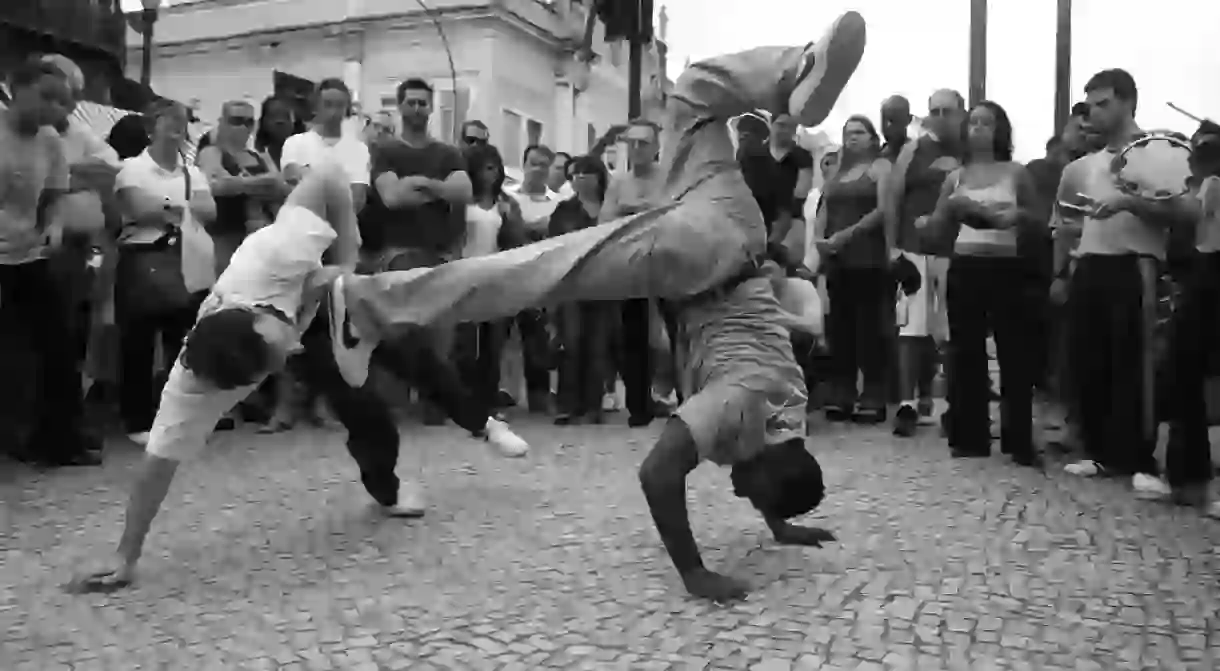Capoeira: Does Brazil's Traditional Martial Art Have a Place in The Olympics?

Capoeira, the historic Afro-Brazilian martial art from the 16th century, has left an indelible mark on Brazil’s culture. Its complex, rhythmic fighting style has often been equated more to a dance than a martial art, and tournaments are seen as cultural celebrations more than competitive sporting events. However, in the wake of last year’s Rio de Janeiro Olympics, there is a growing swell of opinion that capoeira should be further developed as a sport, with a view to one day making it into the Olympic Games themselves.
The origins of capoeira began at the time of the Brazilian slave trade, when between the 16th and 18th centuries Brazil imported an estimated 4.9 million slaves from Africa, more than any other country. Many of these people came from the then Portuguese-controlled provinces of Angola and Mozambique. While toiling on the sugarcane plantations in Brazil’s northeast, the slaves developed the art of capoeira as a means of self-defense, giving them tools to survive were they to attempt to make an escape.

In order to not draw the attention of their masters, the slaves disguised capoeira as a dance, simulating the fights instead of actually making contact. Over the years, the authorities began to realize capoeira was in fact a form of martial art and it was heavily clamped down upon. The Brazilian Republic prohibited capoeira across the nation for many decades, under penalty of imprisonment and torture. This repression waned at the beginning of the 20th century and soon capoeira schools began popping up all over the country.
The basic principles of capoeira involve non-resistance, evasion of attacks and constant movement. The capoeirista never stays still, instead he or she will perform an evasive step known as the ginga, which is a side-to-side movement that attempts to keep the fighter as a constantly moving target, while also potentially wrong-footing the opponent. Attacks are mainly kick-based, whether it be straight, roundhouse or spinning kicks or leg sweeps (known as rasteiras). In defense, the objective is always to dodge and evade attacks, not to block them. Capoeiristas will often perform complex cartwheels and rolls to avoid being attacked, adding to the visual spectacle of the bout.

The versatility and evasive techniques of capoeira have often been incorporated into the combat sport du jour, MMA (Mixed Martial Arts), with fighters often training with capoeira masters to improve their movement in combat. Examples of such athletes include Anderson Silva and Conor McGregor.
Before the Rio de Janeiro Olympics then, with it being such an emblematic Brazilian sport, there were many who backed the idea of capoeira itself making its way into the Olympics. The argument was that it was just as legitimate a martial art as judo, boxing, taekwondo or wrestling, and that becoming an Olympic sport would increase its popularity and worldwide appeal.
Not everyone agrees, but that is due to a profound ideological rift between those who practice capoeira. In broad terms, there are two main varieties of capoeira: Angola and Regional. Capoeira Angola is for the purists; it is an attempt to maintain the roots of capoeira and celebrate its cultural importance. Capoeira Angola has no competition, there are no winners, and demonstrations are always accompanied by music and singing. To its practitioners, capoeira being in the Olympics makes no sense.

Capoeira Regional, on the other hand, is a 20th century invention. It is more of a competition, with rankings and various graduation systems. There is still music and attention paid to its cultural importance, but not nearly as much as in Capoeira Angola. Capoeiristas of the Regional variety are more inclined to support the martial art’s development into an Olympic sport, but even if there was a concerted effort to make it so, such a dream is a long way away.
The several capoeira schools around Brazil and the world have no real unification, all using different graduation systems and rarely coming together as a single movement. The first step towards this would be the creation of an international capoeira organization, one of the prerequisites for becoming a sport recognized by the International Olympic Committee (IOC). Then, this as of yet non-existent organization would have to enforce the Olympic Anti-Doping Code, before petitioning the IOC for inclusion in the Games themselves. Such a process would take years, and currently there does not seem to be enough will to even take the first step.














